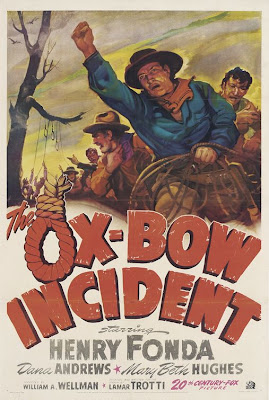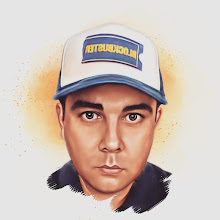 "Diplomaniacs"
"Diplomaniacs" *** 1\2 (out of ****)
"Diplomaniacs" (1933) is my kind of comedy. It is a go-for-broke, anything goes, joke-a-minute romp.
My favorite movie genre has always been comedy. And my favorite comedies, to the disgruntle of every film teacher I had, are the ones which sacrifice plot for a joke. The movies which have no story arc, no real character motivation. The kind of comedies were the jokes come out of left field. Sometimes the jokes are out of character, not the kind of thing a particular character would say. Comedies were plot comes in second to jokes. Comedies that break the fourth wall.
Dear readers, "Diplomaniacs" is such a comedy. Nearly nothing in the movie makes sense. The story is so flimsy, you could tell it in 10 minutes. Characters are introduced in one scene and never seen again. Characters break out in song for no reason at all. Others characters make reference to being in a movie. Some decide, in mid-scene, they no longer want to be in the rest of the movie. Men insult women and there are no repercussions. And it is an all out attack on politics and the nature of war.
The movie stars the forgotten RKO comedy team of the 1930s Robert Woolsey and Bert Wheeler. I've discussed their movies before. I've always mentioned this movie but never got around to reviewing it. It has remained my favorite of their comedies together. I'd even take the compliment one step further and say, it is one of my all-time favorite comedies.
In the movie Wheeler and Woolsey play barbers on an Indian reservation. Their business is a disaster. Indians (or Native Americans for my sensitive PC readers) have no need for the barbers since, according to "Diplomaniacs", it is a well known fact, all Indians have no beards. However the Indians do have a certain use for our heroes. Their chief (Edward Cooper), who speaks with a British accent, and drives to the reservation in a Rolls Royce (I told you, nothing makes sense!) informs the boys of a peace conference in Geneva. The Indians were not invited but they would like the boys to attend on their behalf. The Indians have created a peace treaty which they would like all the world leaders to sign.
Now even in a goofy movie like "Diplomaniacs" there still needs to be a villain. Someone to create a small resemblance of conflict for Wheeler & Woolsey. This is supplied by Winkelreid (Louis Calhern). He represents a company which has created an explosive bullet. For this company peace would put them out of business. If there is peace in the world, there will be no wars. If there are no wars, there will be no need for guns. If people don't buy guns, they won't buy their explosive bullets. Get it? The gun manufactures and bullet makers need war. It creates a profit for them. So Winkelreid devises a plan to stop Wheeler & Woolsey from reaching the peace conference. He uses sex. He hires two vamps (as they were called in those days. I can't use the term we would use today but, another word would be seductress) to seduce the boys and steal their peace treaty.
Describing "Diplomaniacs", I feel, is a mistake. I'm trying to make the movie sound coherent. I'm editing the film to make it all sound logical. "Diplomaniacs" isn't logical. The word "maniac" is part of the title. You can't have a movie make sense with the word "maniac" in it, can you?
What I would like to do is just tell you all the best jokes. But if I do that, I've just spoiled the entire movie for you. Why bother to watch it? Yet, I still feel the need to fully get across how non-sensical the movie really is.
Take for example a henchman character named Chinaman (play by non-oriental character actor Hugh Herbert). During one point in the movie he tells Winkelreid he is tried of the movie and is going back to China. To be with his wife...who he hates! So, he jumps in a row boat and heads back to China! He never speaks with a Chinese accent and at one point goes into an Al Jolson imitation (!). Laurel & Hardy regular foil, Charlie Hall, has a brief scene in the movie. He plays a Valet, who when told to leave the room, jumps out of a window. He is never again seen in the movie. At the peace conference, where there is more fighting than peace talk going on, a bomb explodes, the impact of the bomb makes all the white diplomats appear in blackface. There is a musical number the boys do with an all female Indian chorus where everyone is singing in pig latin. Did you ever hear Indians sing in pig latin? Are you starting to get a sense of what type of movie this is?
"Diplomaniacs" was Wheeler and Woolsey's first film back at RKO studio. The team made all of their movies at the studio with the exception of one, "So This Is Africa" (1933). Which was released by Columbia Pictures. RKO, not wanting Columbia to steal their thunder after resigning the team, immediately released their own movie with the boys in the same year.
Still for all its silliness there is a message lurking around the jokes of the film. It is a political satire. The boys attempted something similiar two years earlier in their comedy "Cracked Nuts" (1931, which I have reviewed). Many people like to compare this movie to the Marx Brothers comedy "Duck Soup" (1933) since both were released in the same year and both have Louis Calhern play the villain. But "Diplomaniacs" actually takes its anti-war message a bit further. It is more direct. Pay attention to a closing number, which the boys do in blackface. It has a gospel feel to it, proclaiming the need for peace. "Diplomaniacs" almost comes across as a pacifist film. At this point in time there was talk of "a war in Europe" brewing. "Diplomaniacs" and "Duck Soup" offer the rebuttal.
The movie was directed by William A. Seiter. He worked with the team often. His collaborations with them rank among the team's better efforts. He directed "Peach-O-Reno" (1931, which I have reviewed). That one comes in a close second to being their best film. Seiter was also behind "Caught Plastered" (1931) and the Gershwin musical adaptation "Girl Crazy" (1932). When RKO split the team (in the hopes of doubling their profits) Seiter directed Wheeler's solo vehicle, "Too Many Crooks" (1931). In addition to Wheeler & Woolsey comedies, Seiter worked with the Marx Brothers on "Room Service" (1938) and Laurel & Hardy on "Sons of the Desert" (1933).
The script was written by Joseph L. Mankiewicz and Henry Myers. I find Mankiewicz to be an unusual choice. I don't often associate his name with this style of comedy. He was an accomplished writer and director himself. He is probably best known for directing "All About Eve" (1950). He wrote "Manhattan Melodrama" (1934) a great Clark Gable/Myrna Loy/William Powell vehicle and "A Letter to Three Wives" (1949). Myers on the other hand wrote the W.C. Fields political satire "Million Dollar Legs" (1932) and the comedy/western "Destry Rides Again" (1939) with Jimmy Stewart.
Unfortunately the comedy team Wheeler & Woolsey are forgotten. They are ignored by today's generation of movie goers. Too bad. But if you do ever decide to see this team in action, "Diplomaniacs" is the place to start. The movie belongs in the same league with "Duck Soup" and the Olsen & Johnson comedy "Hellzapoppin'" (1941, which I have reviewed) as one of the all-time funniest comedies.
















